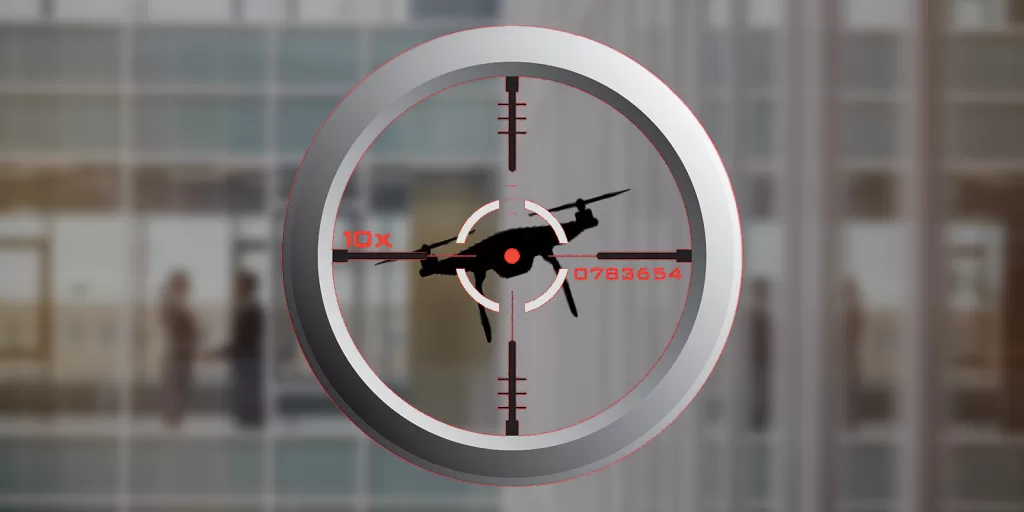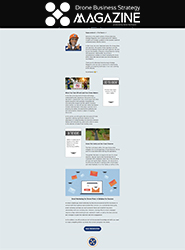
The recent assassination attempt on former President Trump in Florida—just the second in a 60-day period—raises a pressing question: Why weren’t drones deployed to enhance security? In an age where aerial surveillance technology is more accessible and effective than ever, it’s worth examining the value and cost-effectiveness of drones in protecting high-profile individuals.
Additionally, with growing regulatory scrutiny from lawmakers, it’s important to consider whether legal restrictions are delaying the adoption of drones in critical security scenarios.
Drones and the Future of Security
Drones offer numerous advantages in public safety and executive protection. Equipped with high-resolution cameras, thermal imaging, and AI-driven analytics, they can provide real-time aerial surveillance over large areas, enabling security personnel to monitor threats more effectively. For events or locations with high-security stakes, drones could serve as an early warning system, detecting suspicious movements or unauthorized personnel before they can act.
The Value of Drone Surveillance
Drones are not only effective but also cost-efficient compared to traditional aerial surveillance methods. Helicopters, while capable, are resource-intensive, costing tens of thousands of dollars per hour to operate. Drones, in contrast, can be deployed for a fraction of that cost and offer greater flexibility. They can hover discreetly, patrol expansive areas autonomously, and provide high-quality data to ground teams in real time.
Why Aren’t Drones Already a Standard in Executive Protection?
1. Regulatory Hurdles: The U.S. drone industry faces significant legal challenges, including stringent Federal Aviation Administration (FAA) regulations on where and when drones can be flown. Executive protection scenarios often require operation near restricted airspaces or in crowded urban environments, necessitating waivers or special permissions. These delays can make it difficult for security teams to integrate drones into time-sensitive operations.
Recent legislative actions, such as Rep. Stefanik’s bill aimed at bolstering the U.S. drone industry, acknowledge that federal policy must keep pace with technological advancements. The bill seeks to streamline regulatory approvals and support the expansion of drone usage in both commercial and security contexts. However, the bill also highlights the tension between fostering innovation and ensuring national security, as lawmakers work to balance encouraging the growth of the drone industry with addressing concerns about misuse.
2. Technological Limitations: Despite rapid advancements, drones still have limitations that could affect their use in security operations. Weather conditions—like high winds or rain—can disrupt flight, and there’s still a need for skilled operators to manage the technology in real-time. However, with advancements in AI and autonomous control, these limitations are becoming less of a barrier.
3. Security Concerns: Ironically, drones themselves pose a potential security risk. Unauthorized drones have been used for malicious purposes, including disrupting major events and smuggling contraband. This has led security teams to be cautious about using drones, particularly in high-profile situations where another layer of complexity could open up vulnerabilities.
4. Public Perception and Legal Uncertainty: Federal lawmakers’ focus on the regulation of drone technology plays a key role in whether or not drones are widely used for security. Public perception of drones often falls under scrutiny when discussing privacy and surveillance concerns. Additionally, restrictive laws on drone operation, such as bans on flying in certain airspaces, are at odds with the growing need for real-time aerial monitoring during high-stakes events.
While Rep. Stefanik’s proposed legislation seeks to strike a balance between innovation and regulation, some pushback from federal lawmakers could further complicate the legal landscape for drone usage. If the legislative environment becomes more restrictive, security organizations may find it even harder to deploy drones for executive protection, limiting their ability to keep individuals like former President Trump safe.
The Role of Drone Advocacy
Drone operators and businesses don’t have to face these regulatory challenges alone. The Drone Advocacy Alliance is a non-partisan, drone-agnostic grassroots coalition that works to ensure that drone users can weigh in on policies affecting the industry. Formed in response to increasing market access restrictions at both the state and federal levels, the Alliance provides a platform for stakeholders to influence legislation that could affect their ability to operate and choose the best drones for their needs.
Organizations like the Drone Advocacy Alliance are crucial as the industry navigates complex regulatory environments. Their efforts aim to balance innovation with responsible policy, ensuring that drone technology remains available for industries like public safety, agriculture, and executive protection, where its benefits are most needed.
The Case for Integrating Drones into Future Security Protocols
Despite the hurdles, the benefits of drone deployment for executive protection far outweigh the downsides. Equipped with encrypted communication systems, modern drones can mitigate security risks like hacking or jamming. Additionally, advancements in AI have made drones more capable of autonomously identifying potential threats, reducing the need for constant human oversight.
Furthermore, from a cost perspective, drones remain a smart investment. They offer a more affordable and flexible alternative to traditional manned aerial surveillance and can enhance security operations without significantly increasing costs.
Legislation and the Future of Drone Security
Federal legislation, like the bill introduced by Rep. Stefanik, could play a critical role in shaping the future of drone usage in security. While the bill aims to support the U.S. drone industry, the impact of ongoing debates in Congress may influence how quickly this technology can be integrated into high-security environments.
As lawmakers grapple with the balance between fostering innovation and ensuring public safety, it’s essential to consider how legal developments will shape the adoption of drones for executive protection. The recent attempts on President Trump’s life underscore the need for innovative security solutions. Drones, if properly regulated and integrated, could be one of the most effective tools in preventing future attacks.
Conclusion and Takeaway
Drones offer immense potential in enhancing the safety of high-profile individuals. Yet, despite their advantages in cost-effectiveness, flexibility, and real-time intelligence, regulatory hurdles and legislative uncertainties remain significant barriers. As commercial drone pilots, we understand the importance of federal policies that allow for innovation while addressing legitimate security concerns.
With the right regulatory framework in place, drones could become a crucial element in the future of executive protection.
Takeaway for Drone Entrepreneurs
For those operating or looking to expand their drone service business, staying informed on legislative changes like Rep. Stefanik’s bill is critical. Aligning your operations with emerging regulations not only helps you stay compliant but also opens up new opportunities in high-demand sectors like public safety and executive protection. The Drone Advocacy Alliance is an excellent resource for staying engaged in these conversations, ensuring that the voice of the drone community is heard when policy decisions are being made.
Fly smart, stay sharp, and your drone business will soar to new heights. 😉 T
If you have any questions, let us know! If you’d like to hire us, you can get more information here.
Written by: Tony Marino, MBA – FAA Certified Part 107 Commercial Drone Pilot and Chief Business Strategist at Aerial Northwest
Disclaimer: The information provided in this blog post is for general informational purposes only and should not be construed as legal advice.
Resources
- FAA Resources: FAA DroneZone
- Stand Up for Your Right: Drone Advocacy Alliance
- Article: Stefanik Introduces Bill to Bolster the U.S. Drone Industry
- Article: Top 5 Drone Pilot Marketing Channels for 2024

DRONE BUSINESS STRATEGY MAGAZINE
A free digital publication made exclusively for all small business drone pilots to them help start-up, become profitable while sustaining a competitive advantage within the drone service industry sector they opt to serve.
“If you love to fly, we’d love to have you come aboard!”
We share your information with no one. Our Privacy Policy.









Leave a Reply
Your email is always safe with us.